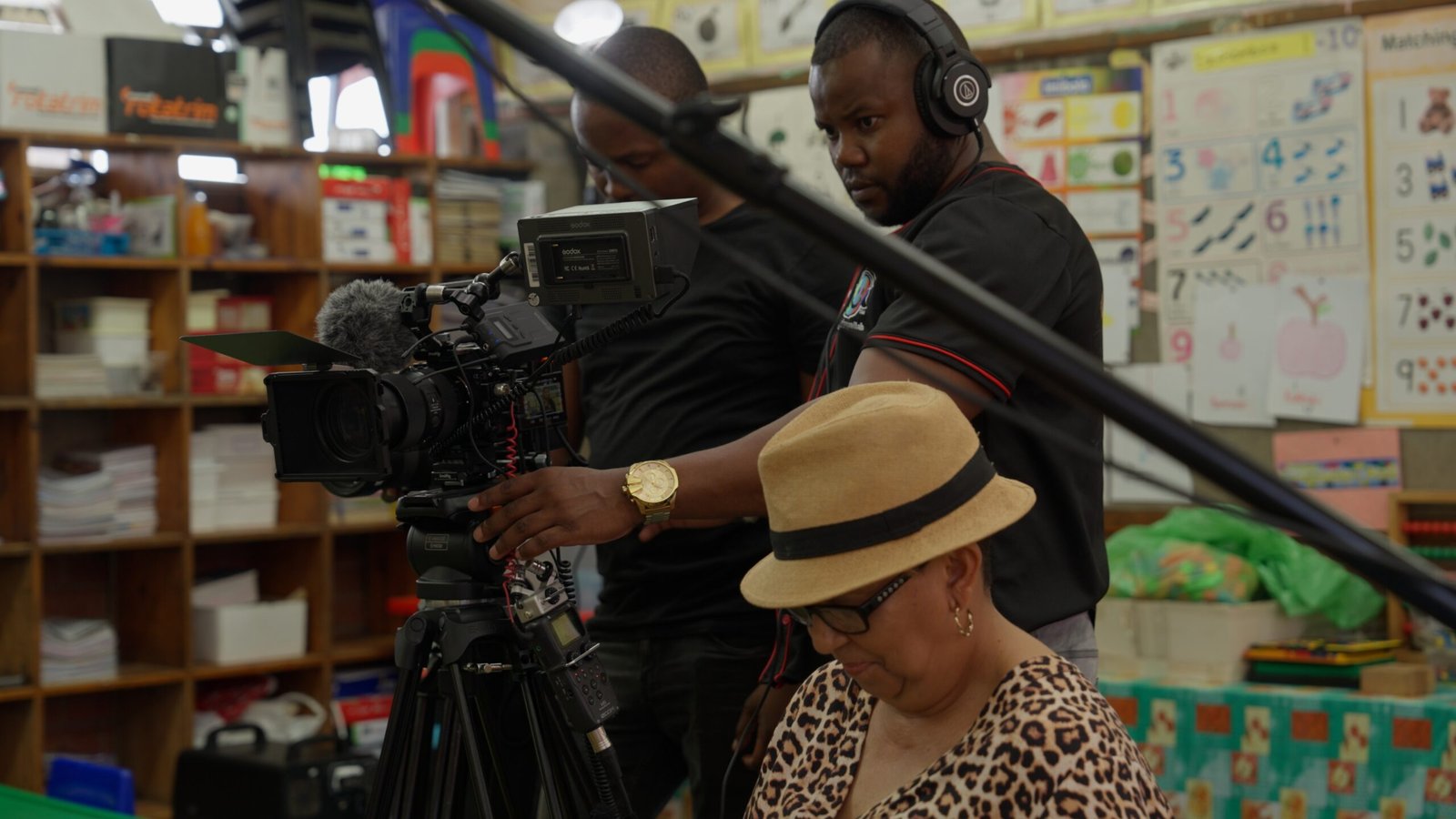Ultimate Guide to Choosing the Right Video Production Company for Your Business In today's digital…
Ultimate Guide to Successful Video Production for Non-Profit Organizations
In today’s digital age, video production has become a pivotal tool for non-profit organizations. Why? Because videos have the power to tell compelling stories, reach wider audiences, and build trust like no other medium. Whether you’re looking to raise funds, recruit volunteers, or spread awareness about your cause, video can be a game-changer.
Why Video Production is Essential for Non-Profits
Engaging Storytelling
Videos allow non-profits to weave powerful narratives that can evoke emotions and inspire action. Through visual storytelling, organizations can highlight their mission, showcase their impact, and connect with their audience on a deeper level.
Enhancing Outreach and Awareness
A well-produced video can significantly amplify your outreach efforts. Platforms like YouTube, Facebook, and Instagram provide immense opportunities to share your message with millions of people worldwide, increasing your organization’s visibility and reach.
Building Trust and Credibility
Seeing is believing. Videos can showcase the authenticity of your work, the dedication of your team, and the real-world impact of your initiatives. This transparency builds trust and credibility with donors, volunteers, and supporters.
Understanding Your Audience
Identifying Target Demographics
To create videos that resonate, it’s crucial to understand who your audience is. Are they potential donors, volunteers, or beneficiaries? What are their interests and concerns? Knowing your target demographics helps in tailoring your message effectively.
Crafting Messages That Resonate
Once you’ve identified your audience, the next step is to craft messages that speak directly to them. Use language and visuals that align with their values and motivations. Personal stories and testimonials can be particularly effective.
Planning Your Video Production
Setting Clear Objectives
Before diving into production, define what you want to achieve with your video. Are you aiming to raise awareness, solicit donations, or recruit volunteers? Clear objectives guide the entire production process and ensure your video serves its purpose.
Budgeting for Your Video
Budgeting is a critical aspect of video production. Determine how much you’re willing to spend on equipment, personnel, and post-production. While high-quality videos can be costly, there are ways to produce effective content on a limited budget.
Creating a Production Timeline
A detailed production timeline keeps your project on track. Outline all the stages of production, from pre-production to distribution, and set realistic deadlines for each task. This helps in managing time and resources efficiently.

Types of Videos for Non-Profits
Fundraising Videos
Fundraising videos are designed to inspire donations. They should highlight the urgency of your cause and clearly communicate how contributions will make a difference.
Awareness Campaigns
Awareness videos educate the public about specific issues and the work your organization is doing. These videos can be informative, thought-provoking, and shareable.
Volunteer Recruitment
Recruitment videos aim to attract volunteers by showcasing the rewarding experiences and opportunities for impact that come with volunteering for your organization.
Impact Stories
Impact stories highlight the positive changes brought about by your organization’s work. Featuring beneficiaries and their personal stories can be incredibly powerful.
Event Highlights
Event highlight videos capture the essence of your events, from fundraisers to community outreach programs. These videos can be used to promote future events and showcase your organization’s activities.
Pre-Production Phase
Research and Development
The pre-production phase starts with research and development. Understand the topic, gather relevant information, and brainstorm ideas. This groundwork is essential for creating a compelling video.
Scriptwriting
A well-written script is the backbone of any successful video. It should be engaging, concise, and aligned with your objectives. Include a clear call-to-action to guide viewers on what to do next.
Storyboarding
Storyboarding involves creating a visual plan for your video. Sketch out each scene to visualize the flow of the story. This helps in planning shots and ensuring a cohesive narrative.

Assembling Your Production Team
Hiring Professionals vs. Volunteers
Depending on your budget and the complexity of your video, you may choose to hire professionals or rely on volunteers. Professionals bring expertise, while volunteers can add a personal touch and reduce costs.
Key Roles: Director, Producer, Editor, etc.
Identify key roles needed for your production, including a director, producer, editor, and camera operators. Each role plays a vital part in bringing your video to life.
Equipment and Technology
Choosing the Right Camera
Selecting the right camera is crucial for quality production. Consider factors like resolution, frame rate, and budget. DSLRs and mirrorless cameras are popular choices for non-profits.
Audio Equipment
Good audio quality is as important as video quality. Invest in reliable microphones and audio recorders to ensure clear sound.
Lighting Essentials
Proper lighting enhances the visual appeal of your video. Use soft lighting to create a natural look and eliminate harsh shadows.
Editing Software
Editing software like Adobe Premiere Pro or Final Cut Pro allows you to refine your video, add effects, and ensure a polished final product.
Shooting Your Video
Best Practices for Filming
Follow best practices for filming, such as using a tripod for stability, framing shots effectively, and ensuring proper exposure. These techniques enhance the overall quality of your video.
Importance of B-Roll Footage
B-roll footage provides additional visuals that complement your main shots. It adds depth and variety to your video, making it more engaging.
Capturing High-Quality Audio
Ensure high-quality audio by minimizing background noise and using professional microphones. Clear audio enhances the viewer’s experience and understanding.

Post-Production Phase
Editing Your Video
Editing is where your video comes together. Trim unnecessary footage, arrange clips logically, and add transitions for smooth flow. Pay attention to pacing to keep viewers engaged.
Adding Music and Sound Effects
Music and sound effects add an emotional layer to your video. Choose music that matches the tone of your message and use sound effects sparingly to enhance key moments.
Incorporating Graphics and Text
Graphics and text can highlight important information and reinforce your message. Use them to emphasize statistics, quotes, and calls-to-action.
Distribution Strategies
Utilizing Social Media
Social media platforms like Facebook, Instagram, and Twitter are ideal for distributing your video. Tailor your content for each platform to maximize reach and engagement.
Email Marketing
Incorporate your video into email campaigns to directly reach your supporters. Personalize emails to increase open rates and encourage sharing.
Website Integration
Feature your video prominently on your website’s homepage or relevant sections. This ensures it reaches visitors who are already interested in your cause.
Partnerships and Collaborations
Collaborate with other organizations, influencers, and media outlets to broaden your video’s reach. Partnerships can introduce your video to new audiences and amplify its impact.
Measuring Success
Analyzing Viewership Data
Use analytics tools to track viewership data, such as views, watch time, and engagement rates. This data provides insights into how well your video is performing.
Gathering Feedback
Collect feedback from your audience to understand their reactions and gather suggestions for improvement. Surveys and comments sections can be valuable sources of feedback.
Adjusting Future Strategies
Based on the data and feedback, adjust your future video production strategies. Continuously improving your approach ensures your videos remain effective and impactful.
Common Challenges and Solutions
Budget Constraints
Working with limited budgets is a common challenge for non-profits. Prioritize essential elements, seek in-kind donations, and leverage volunteer support to manage costs.
Limited Resources
Limited resources can hinder video production. Optimize the resources you have, utilize free or affordable tools, and focus on creativity over expensive equipment.
Time Management
Balancing video production with other organizational tasks can be challenging. Create a realistic timeline, delegate tasks, and stay organized to manage time effectively.

Case Studies of Successful Non-Profit Videos
Example 1: Charity: Water
Charity: Water’s videos effectively communicate the impact of clean water projects. Their storytelling approach and high production quality have inspired many to support their cause.
Example 2: The Girl Effect
The Girl Effect’s videos focus on empowering girls worldwide. Their compelling narratives and strategic use of social media have garnered widespread attention and support.
Conclusion
Video production is a powerful tool for non-profits to tell their stories, engage their audience, and drive their mission forward. By understanding your audience, planning meticulously, and leveraging the right resources, you can create impactful videos that make a difference. So, gear up, get creative, and let your story shine through the lens.
FAQs
What is the average cost of video production for non-profits?
The cost can vary widely depending on the video’s complexity and quality. On average, it can range from a few hundred to several thousand dollars.
How long should a non-profit video be?
Ideally, non-profit videos should be between 2 to 5 minutes long. This duration is enough to convey your message without losing the audience’s attention.
What are some free tools for video editing?
Some popular free video editing tools include iMovie, DaVinci Resolve, and HitFilm Express. These tools offer a range of features to help you create professional-looking videos.
How can non-profits measure the impact of their videos?
Non-profits can measure impact through viewership data, engagement metrics (likes, shares, comments), and direct feedback from viewers. Surveys and follow-up questions can also provide insights.
Can non-profits produce high-quality videos with a small budget?
Yes, with careful planning and resource optimization, non-profits can produce high-quality videos even on a small budget. Leveraging volunteers, using free tools, and focusing on storytelling can help achieve great results.




